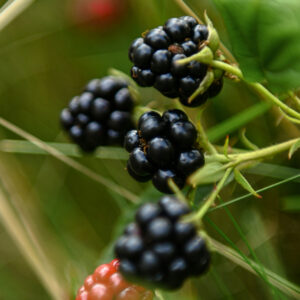Fermentation
Most Brewers yeast work on sucrose first, breaking it down into its glucose and fructose componets. They then consume the glucose first, followed by fructose, maltose and finally maltotriose. Of course being that they are live little beasties, they can sometimes behave differently.
Most yeast strains are glucophilic, utilizing most of the glucose in the wort before consuming the other monosaccharides. They also ferment most of the monosaccharides before fermenting maltose and subsequently maltotriose. In fact, it is known that high levels of glucose and fructose in a wort (e.g. >15–20%) will inhibit the fermentation of maltose. This repressive behavior is probably a common cause of stuck fermentations in worts containing a lot of refined sugars — the yeast have fermented the monosaccharides and then quit, leaving more than half of the total sugars unfermented.
Types of Sugar


Brewing with Fruit
When selecting a fruit to add to your brew it is a good idea to keep some things in mind. Knowing what the fruit will add in flavor, color, sugar content and pH will help you in deciding amounts of the fruit and other ingredients to add with it.
Most fruit contain between 10 and 15 percent sugar when ripe. Most fruits contain a mixture of fructose, glucose and sucrose in their sugar makeup.
One misconception of brewing with fruit is the need to properly deal with pectin and pectin haze that can come with brewing with fruit. Pectin is carboxymethylcellulose and is helpful when making jams and jellies as it aids in thickening. The pectins are extracted most often when the fruit is heated. Thus, if you brew without heating the fruit as we suggest, then issues with pectin haze should be minimized. Also, the most common fruits used in brewing are naturally low in pectin to start out with, minimizing this concern further.
A word of caution: not all parts of all fruits are edible and thus those parts should not be added to a brew. What does this mean? The pits of some fruits contain cyanogens which break down to release hydrogen cyanide. It is highly unlikely that you will produce enough cyanide in your brew to cause cyanide poisoning, however, simply removing the pits prior to fermentation is always recommended.
(The chart below is a work in progress. We strive to continue to add information when we find it. This said, some of the areas may be left blank where I have yet to find the information. The fruit with the sugar section left blank is an example of this.)









